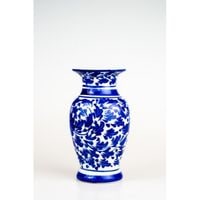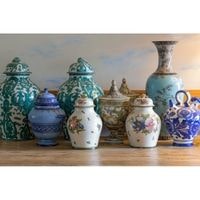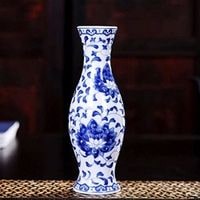How to identify antique vases. Antique vases range in value depending on the material that is were made from.
Porcelain and glass are two common materials used for centuries to create beautiful and intricate antique vases,
but with that in mind, collectors’ must be able to tell the difference between an older example of a piece of pottery intended as art and new merchandise that may look convincing as well.
How to identify antique vases

If you want to buy a vase, look for marks on the bottom of it. Marks may reflect the name of the company that made the vase as well as it is designer.
When the vase has a company name and an artist’s name, it may be worth more than if it simply has a company name.
Marks may be inked, painted, or engraved into the bottom of your new ware.
So make sure that you go through these points discussed below to learn about identifying real vintage and antique vases.
It’s Always Best To Look At The Bottom
Check to see if there is a stamp of any sort on the bottom of your vase. Indentations may reveal where it was made and who originally designed it.
Make sure the markings are not a result of something that might have fallen into it, such as dirt or tea leaves, because that could strip away its value.
You could always check with an appraiser who specializes in antiques if you’re not sure about marking authenticity.
Some factory stamps were used for many years besides. You can research online to see what your particular company’s mark is worth today.
Inspecting the Vase’s Edges

Though edges are found in a variety of objects and implements, it is the edges of glass vases that require more observation and attention.
Glass vases can be old antique pieces that were once used for storing plant water or food pieces of stuff.
Even now these decorative items are used as home decorations to serve objective purposes utilizing their beauty to boost appeal but most vintage items have lost their original purpose.
Find The Mark On The Base
So, the next step is identifying whether it is original or not? For this, you can go to a website that specializes in checking marks.
Another best possible way is to search for that mark on Google and compare the images you find on the internet.
Also, if you love to do things conventionally, you can look for a glossary of antique marks in a local library. In addition, you can find the catalogs for such marks.
Composition of the Materials Used
Antique Vases are made from a variety of materials like glass, brass, porcelain, etc. Many people these days try to make and sell vases that look like antique ones and label them as rare collectibles.
However, there are certain things that set real antiques apart from the rest. Firstly, you’ll want to check the characteristics of the material used (i.e. glass) and how it looks in comparison with the copy to tell if a vase is real or fake.
Secondly, when looking for such items ensure that you don’t forget they aren’t all the same.
They have different properties so don’t just settle for any old vase you come across thinking it’s an antique. Get professional help before spending a lot on a vase that could turn out to be worthless.
Conclusion
If you’re fond of collecting antique vases, you should ensure that any piece you purchase is genuine.
Once you buy a new acquisition, it will stay within your collection for years to come & be a precious part of your history.
Also, considering the effort & money spent in pursuit of this new workpiece, if you find yourself purchasing an imitation, it’s vital to be able to recognize this immediately so following the tips above can help with that.
How to identify antique vases
Related Guides
